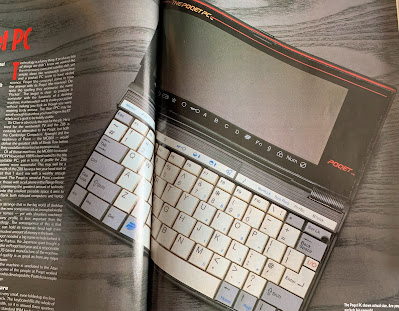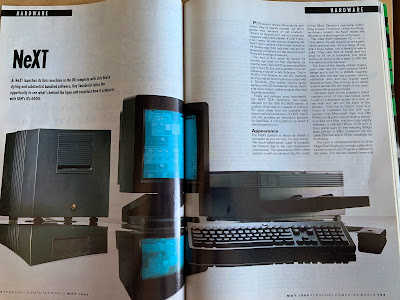I was given a heads up on Twitter about this magazine and thought it would be worth looking at. Initially, I'd picked up issue 9 as it was fairly recent and also discounted - hey, got to love a bargain. When it arrived a couple of days later, I had a quick look through it then ordered issue ten, the latest one, because having that ten minute flick though the pages convinced me that I wanted to read more.
As the tagline on the cover states, "Eighties, Nineties, Now" is the name of the game and it's pretty obvious as to the crowd this magazine is aiming for. You get coverage on video games, films, TV, collectibles, wrestling and skateboarding. Those latter two aren't really my thing, although I was at school in the early 90's when the American wrestling invasion happened - it just never appealed to me. And as for skateboarding. No, gentle reader, just no. I have all the balance, style and poise of a sedated panda.
The physical quality of the magazine cannot be faulted, high quality stock is used and the design layout is quite clean and very easy to read. Issue nine comes in at 72 pages and issue ten at a massive 108 pages!
 |
| Issue Nine contents page. |
Let's begin with issue nine first though, and there are reviews, previews and regular sections that are presented in such a way that it reminded me very much of the anarchic style of CVG and Mean Machines. The artwork is impressive, whilst the writing is clear and precise, allowing each contributor's voice to shine through. The Ask Erin problem page had me in fits of giggles with its sage advice too.
 |
| The layout is clear but with character. |
Issue ten is bigger and there is a reason why. You not only get more pages but it also heralds a pause in the magazine publication - might as well go out on a high. The editorial explains the situation well and, whilst we will be seeing more from the team behind the magazines (and possibly more editions), they do sensibly suggest signing up to their newsletter to stay informed. You can also follow them on Instagram, Facebook and Twitter.
 |
| Issue Ten contents page. |
I think I enjoyed ten better than nine, and that is mostly down to the focus on the various forms of Dungeons and Dragons - I loved the cartoon show! Writing, presentation and art maintain their high standards and it's great to see an independent publication cover the period of my childhood. Ok, never gonna skate and the idea of watching sweaty men in lycra does not appeal (not even those OnlyFans channels - just checking to see if you're reading these posts, darling!) but that is the joy of reading mags like Cool Sh#t, learning new stuff and remembering other sh#t that the mists of time had faded into obscurity.
 |
| I loved that cartoon! |
A note on customer service - there was a small problem in getting issue ten. A short email was responded to within hours and the problem was sorted the next day. Brilliant service all round!
It really is up to you if you think Cool Sh#t Magazine is for you, but if you are a child of the 1980's and 90's, this is aimed pretty much at you, and in my humble opinion, you owe it to yourself to check it out. I have enjoyed these two issue immensely and have great anticipation towards whatever the team produce next.













